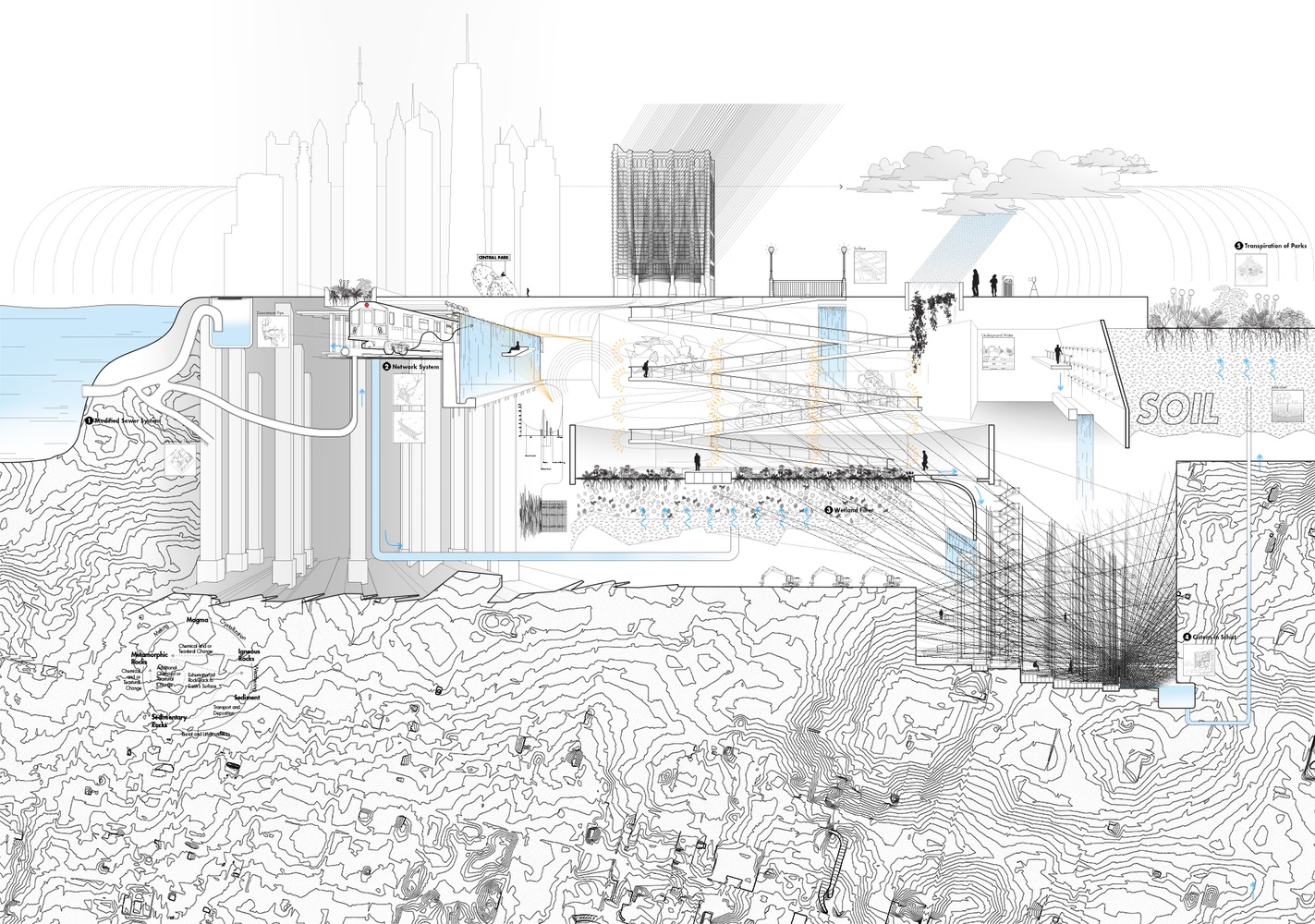New York, a waterfront island city, faces intensifying storms and rising sea levels, and its outdated drainage system cannot handle these challenges. The city urgently needs resilient infrastructure to adapt. The iconic subway, an integral part and symbol of New York, offers an opportunity for repurposing through its abandoned stations.
These undervalued stations can be transformed into spaces for essential and socially desirable functions. By introducing light, air, water, and creatures, they can become resilient wetland installations, providing urban oases and a flood-absorbing system. They can serve as urban moderators and pocket parks, giving new life to discarded relics.
To combat flooding, a network of pipes can be installed through subway tunnels, connecting to the city’s sewer system and reservoirs beneath abandoned stations. These adaptations to New York’s existing infrastructure and foundation will increase its resilience and capacity for new life, helping to address the challenges of a changing ecosystem.







